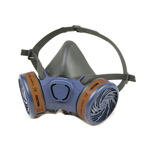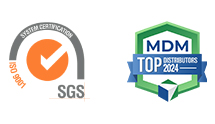The NFPA (National Fire Protection Association) estimates that 37,000 fires occur in industry each year and an estimated 562,000 employees are at risk for exposure to chemical and physical hazards of welding.
To ensure you have the proper preparations for hot work, perform a hazard assessment to establish the necessary controls, confirm that hot work permits have been issued, and designate an employee to perform a fire watch.
When performing hot work, workers can adopt several best practices to help avoid hazards including electric shock, exposure to fumes and gases, physical injuries, and fires or explosions. Let’s look at some of the top safety rules your workplace can implement:
1. Safety Procedures
Knowing your company’s safety procedures that can keep yourself and others safe. Always stay up to date on your organization’s requirements
2. Equipment Safe Operation
Familiarize yourself with equipment safety guidelines and understand how to operate the equipment safely.
3. Proper Ventilation
Controlling fumes and gases by maintaining proper ventilation (fans/exhaust systems) and wearing PPE (Personal Protective Equipment) is the foundation for protecting yourself from fumes and gases. Depending on the work you are performing and the substances you are encountering, you may need to wear a respirator to help prevent heavy metal poisoning or lung cancer. Fumes may produce metal fume fever with symptoms that may include:
- Respiratory disturbances
- Influenza
- Fever
- Acute bronchitis
- Pneumonia
- Chills, shivering, trembling
- Nausea, vomiting
4. Reduce Exposure to Electric Shock
Reducing the exposure to electric shock—a common hazard facing welders—can be done by following some simple steps:
- use proper insulation
- use equipment that is dry (including their person)
- avoid coming in contact with metallic parts
- thoroughly inspect all equipment and confirm that it is fully grounded before working
- perform lockout tagout procedures if a repair is needed
- ensure a qualified person conducts repairs
5. Protect From Fire
Protecting the building and its occupants by limiting the possibility for fires to erupt. Welding can create sparks that can fly up to 35 feet. Maintain a clutter-free workspace by storing chemicals or other flammable objects away from the workspace. Train employees to know where fire alarms, emergency exits, and other fire prevention equipment are located and ensure that working 10lb ABC fire extinguishers are easily accessible.
Understanding Fire Extinguisher Ratings
Fire extinguishers are rated by the type of fire they can extinguish. Using the wrong fire extinguisher can make a fire worse.
- Type A – Combustible Materials
- Type B – Flammable chemicals
- Type C – Electrical
- Type D – Combustible metals
- Type K – Cooking grease (commercial)
Fire Extinguisher Guidelines
- DO NOT place or store near hazards that can damage extinguishers
- DO NOT store inside flammable storage areas
- DO NOT mark, paint, color, or interfere with manufacturer marking or design
- DO NOT place on the ground
- DO NOT store more than 5 feet above ground
- DO NOT block access
Using a Fire Extinguisher
Properly use a fire extinguisher by using the PASS System
- Pull the pin
- Aim at base of fire
- Squeeze handle
- Sweep from side to side
Most importantly, ensure you have a means of escape BEFORE attempting to extinguish a fire! Remember that welding should not be performed where paint or dust hazards are present.
6. Dress for the Job
Dressing for the job by wearing appropriate PPE. Welders should have a PPE program that includes:




















